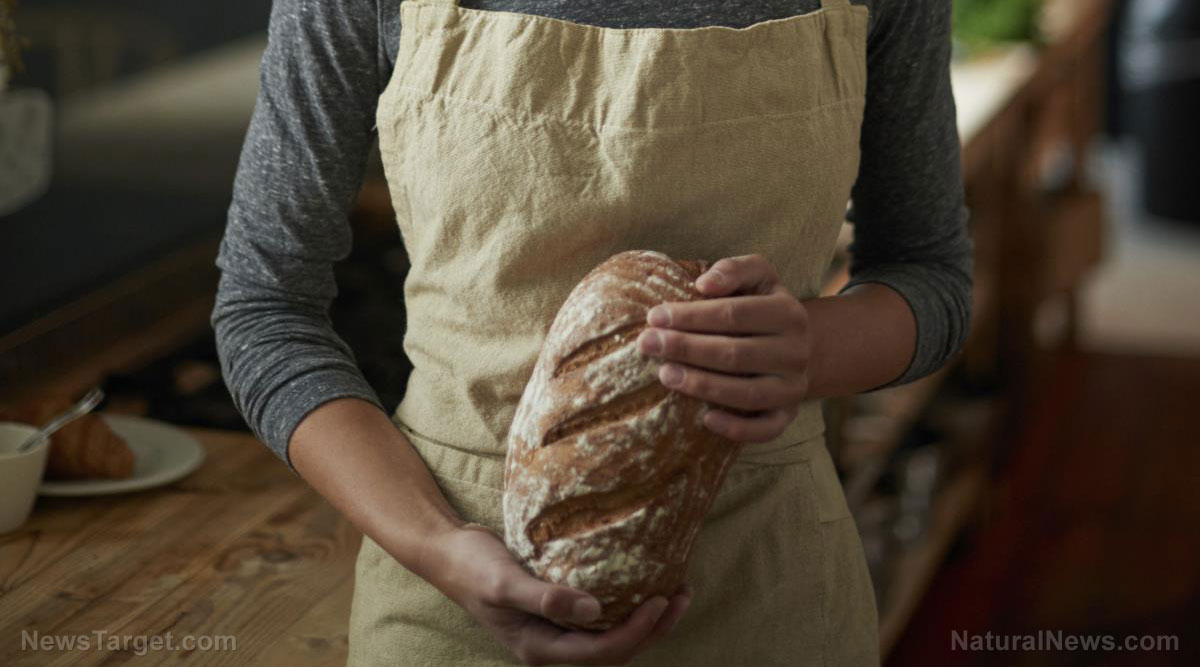
Advertisement
Bread has had quite the bad rap, with many equating its starchy nature to unhealthy diets. They could not be more wrong.
By itself, bread — especially if it’s made from whole-grain flour and organic ingredients — is actually good. It’s what we put on it that makes it unhealthy.
However, there are many ways to make bread healthy. Here are some of them:
Use sprouted whole grain
Just like its name suggests, sprouted whole grain bread is made using whole grains that have started to sprout from exposure to both heat and moisture.
While this may seem like a strange thing to do, the sprouting process actually adds more vitamins to the final product. This is because, during sprouting, many of the nutrients present in the grains become more bioavailable.
For instance, pita bread made with 50 percent sprouted wheat flour was found to 3 times as much folate than pita made with conventional ingredients. Folate, according to experts, is a vitamin critical for converting food into energy.
In addition, research has revealed that the sprouting process also increases the antioxidants in the grains. This means that the end product can help the body combat the negative effects of free radicals from the environment.
Even better: the sprouting process actually breaks down some of the starches, which means that the resulting bread does not increase blood sugar as much as other grains, thereby making them a good choice for people with diabetes.
They are also more filling than more refined bread, mainly due to their high fiber and protein content.
Use sourdough cultures to leaven your bread
Instead of using conventional, store-bought yeast, why not use a sourdough culture to make your dough rise?
For those unfamiliar with this ingredient, a sourdough culture or starter is actually a combination of naturally-occurring yeast and bacteria and added to a mixture of flour and water.
This mixture, which is considered a “live” product due to the presence of active microorganisms, helps make the dough rise by digesting the starch and producing carbon dioxide.
Aside from making it rise, using a sourdough starter can also help reduce the number of phytates in the dough. Phytates are antinutrients that bind to minerals, thus preventing them from being absorbed by the body.
Another benefit to using sourdough in bread making, experts said, is that it makes the final product have a low glycemic index, making it a boon for those with reduced insulin sensitivity.
Use less salt
Salt is an important part of the baking process, as it helps strengthen the protein bonds formed by flour and water, giving bread its signature structure. It also adds depth and flavor to the bread.
However, it’s very easy to go overboard with salt which could spell trouble for one’s heart and kidneys in the long run.
If you want to make sure that your bread is tasty without adding a ton of salt into it, you can try adding spices to make it flavorful without running the risk of damaging one’s kidneys.
Use organic whole-grain flour
No doubt about it, flour made from whole grains is leagues better than its refined counterparts — not the least when it comes to nutrient content.
This is because whole grains keep the entire grain intact, including the germ, endosperm and bran. This is in stark contrast to refined grains, which only keep the starchy endosperm.
As noted by experts, the germ and bran are two of the most nutritious parts of the grains, as they contain protein, fat, vitamins, minerals and beneficial plant compounds — all of which are linked to impressive health benefits such as reductions in one’s risk of type 2 diabetes, heart disease and certain cancers.
Try using gluten-free flour
It may seem like an impossible task but it is possible to make bread without using gluten-rich flour such as wheat, rye, or barley. This is important because it gives options for people who may need to avoid gluten, such as those with celiac disease or gluten sensitivity.
To make gluten-free bread, you can use flour made from brown rice, almonds, coconut, potato and corn and tapioca. These tend to be lower in carbohydrates compared to flour made from the likes of wheat and rye.
Aside from that, flour from gluten-free alternatives tend to have higher amounts of fiber and protein than flour made from wheat or other grains. This means that they can help fill you up more than other bread despite packing fewer calories.
Multi-grain bread
Now that you know ways to make a healthier, more nutritious alternative to store-bought white bread, here is a recipe that you can try:
Ingredients:
- 1 1/4 cups organic mixed grains (mix equal amounts of barley, brown rice, corn, millet, oats, rye and wheat germ)
- 2 1/2 cups boiling water
- 1/2 cups all-purpose flour
- 3 1/2 cups whole wheat flour
- 1/2 tablespoon salt
- 1/3 cup raw honey
- 1/4 cup grass-fed, unsalted butter (melted)
- 2 1/2 teaspoons active dry yeast
- 1/2 cup unsalted organic sunflower seeds
- 1 tablespoon organic chia seeds
- 1/2 cup old-fashioned rolled or steel-cut oats
Preparation:
- Place the mixed grains in a large bowl. Add boiling water and let stand for about 1 hour, stirring occasionally, until mixture cools to about 100-105 degrees Fahrenheit.
- While waiting for the mixed grains to cool, whisk the flours and salt together in a separate bowl; set aside.
- Once the grain mixture has reached 100-105 F, add honey, butter and yeast and stir until well-combined. Let the mixture sit for 5-10 minutes.
- Add the flour mixture, 1/2 cup at a time, to the mixed grains and knead until the dough starts to come together.
- Cover bowl tightly with plastic wrap. Let the dough rest for around 20 minutes.
- After 20 minutes, and using the dough hook, knead the dough on medium-low speed for about 3-4 minutes, or until it clears the sides of the bowl.
- Once the dough comes together, continue to knead the dough for 5 additional minutes.
- Add seeds, and knead until seeds are evenly dispersed throughout the dough and dough forms a smooth, round ball.
- Place dough in a large, lightly greased bowl and cover tightly with plastic. Let the dough rise at room temperature until nearly doubled in size. This will take about 45 to 60 minutes.
- While waiting for the dough to rise, grease two 9×5 inch loaf pans.
- Transfer dough to a lightly floured counter and divide in half.
- Stretch the first piece of dough into a 9×6 inch rectangle.
- Roll dough into a cylinder, and place dough seam-side down in the prepared loaf pan.
- Repeat the process with the second piece of dough.
- Spray loaves lightly with water.
- Sprinkle both loaves with steel-cut oats.
- Cover loaves loosely with greased plastic, and let rise at room temperature until nearly doubled in size. This will take another 30 to 40 minutes.
- While waiting for the dough to rise, preheat the oven to 375 F.
- Once the oven has come to temperature, and the loaves have doubled in size, place the dough in the oven and bake until loaves register 200 degrees. This will take roughly 40 minutes.
- Once the loaves have finished baking, transfer the pans to a wire rack, and let the loaves cool for 5 minutes.
- Remove loaves from pans and let them cool to room temperature on a wire cooling rack.
- Slice the bread and serve with grass-fed butter, organic jams and jellies and organic cheeses.
Bread is an integral part of many diets and is even considered by many to be a cultural touchstone. However, assembly line-style modern bread making has reduced this once-healthy staple into a calorie-laden, sugary mess — with disastrous consequences.
It’s a good thing then, that many are now trying to bring bread making back to its more humble, homey and healthy roots, with the end goal being to supply good and wholesome food to their friends and family.
Sources:
Advertisements







